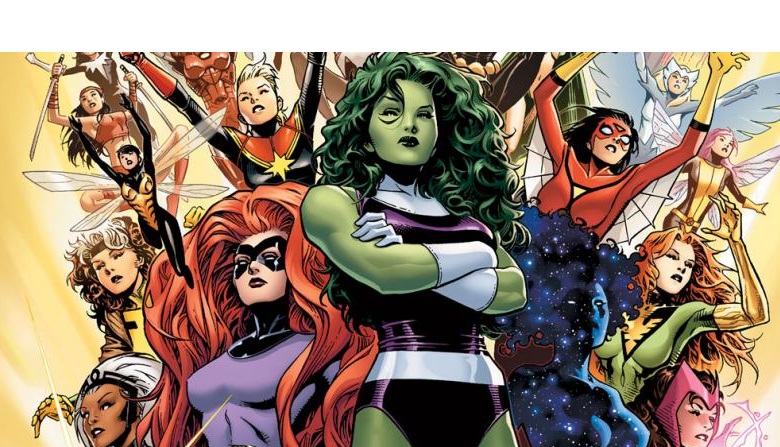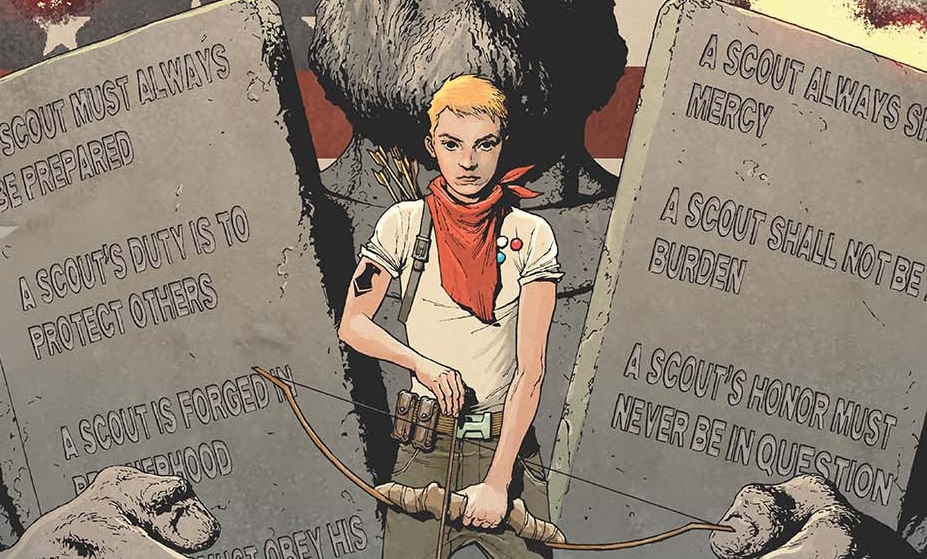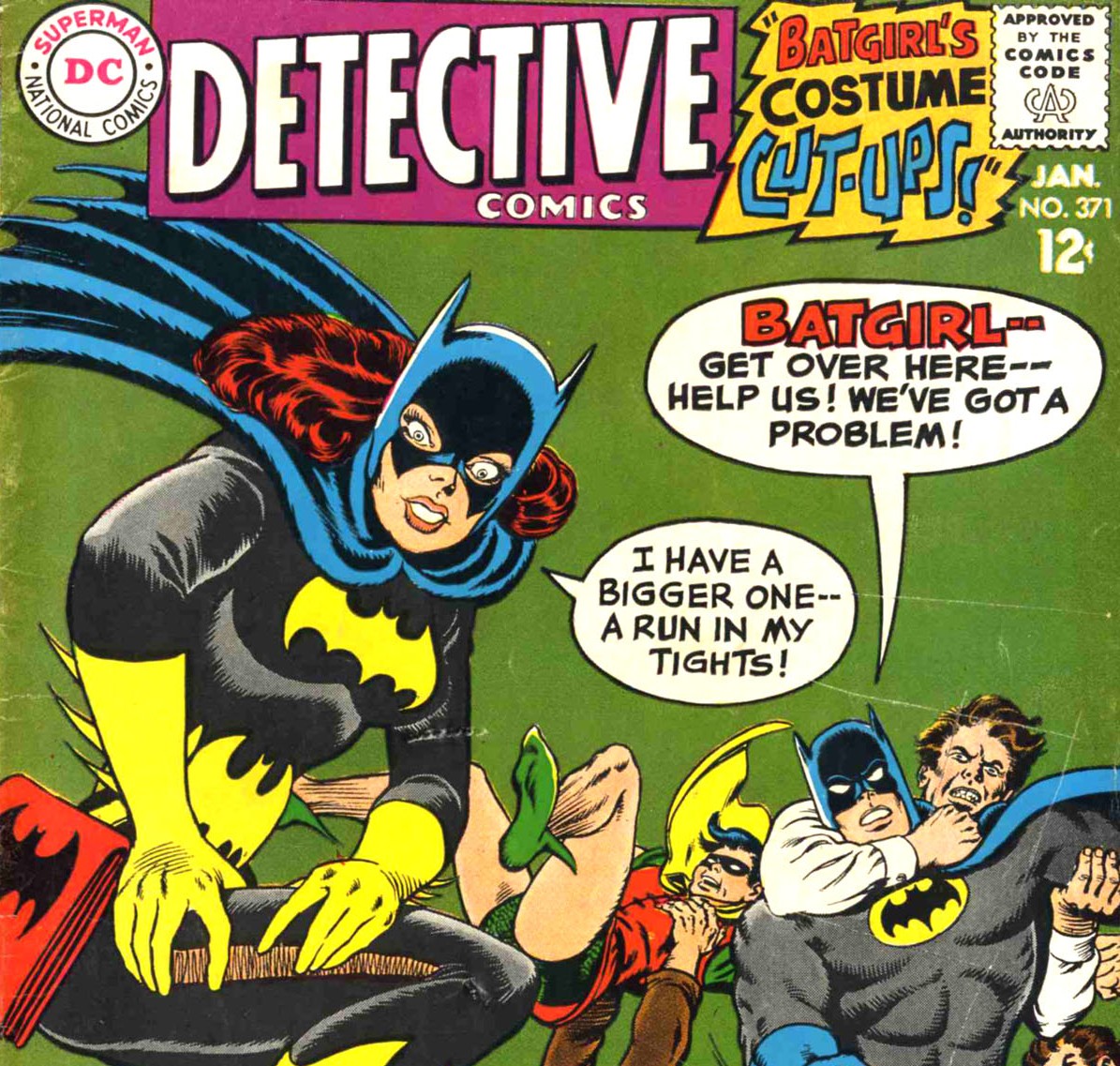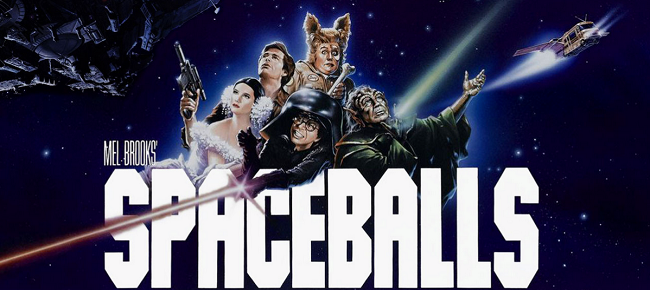Hi. My name is Matt Wood and I’m addicted to collecting commissioned comic art. Hopefully you have all said “Hi, Matt!” to your screen in a welcomed unison, but this is where the references to a support group should end because I’ve been collecting pieces for the past three years, and apparently there is no sign, neither financial nor interest-based, of stopping. I can blame my friend and comic merchant for exploiting my naive and susceptible younger self. His name is Brian, and he has been in the collecting game for much longer than myself, with a collection that would rival a comic art museum. Sometimes I blame Brian when we are at a convention, and spending beyond our rarely enforced budget, for getting me in the habit. But in his defense he did warn me. I remember the conversation we were having with another friend before a local convention. He turned to me and said the words, “If you start, it’s really, really hard to stop.” Of course he was right. But frankly there are no regrets, and I am taking it upon myself to cultivate the budding interest of any prospective art collector that might be reading this.
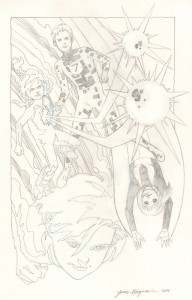
-Matt Wood Collection
I’ve learned a few things since buying my first piece. It was a sketch of the Fantastic Four’s Thing with Wonder Woman being hoisted upon his shoulder by future Deadpool artist, John Lucas. I loved it. Not only was it two characters that are hardly presented together for obvious reason, but it was also an excellent display of two characters that are favorites of both myself and my then future wife. It was a great piece to start my collection with. Not only was it well-done, by my interaction with John went very smoothly. Sometimes it doesn’t go so smoothly. Now don’t get excited. I’m not going into gory details about the rougher experiences I’ve had, but like with anything, there were moments early on that I had wished to have a knowledge that I wouldn’t garner until I was a more experienced collector.
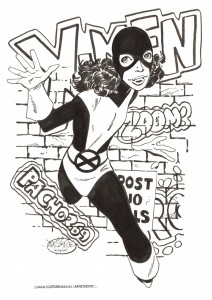
– Brian Keohan Collection
Picking up sketches and commissions….hmm. I should tell you the difference between the two if I am to go any further. A sketch is usually done very quickly and lacks detail, often just a head or bust drawing. Usually collectors request the artist do these in an organized notebook or sketchbook sometimes compiled with a certain theme. The upside is that artists rarely charge much for these if anything, and once a few have been collected, these notebooks become something worth bragging about. Commissions are a bit more detailed. Often these pieces are full-bodied, posed and can contain various bonuses like backgrounds or interactions with the figure’s environments. Since these usually take the artist more time and work, they often have a pretty noticeable price tag compared to sketches, which will vary on numerous factors ranging from the details on the piece or the demand of the artist; all of the money is worth it when it is hanging in your office or living room boldly stating to any guest of your residence that not only are you a comic fan, but one that seeks out the unique.
Now, back to what I was talking about earlier. Picking up sketches and commissions is a process that changes depending on the artist. You as a collector need to appreciate these differences and keep in mind that’s what makes them human. Which is another thing that should be considered: These are human beings. They have good days and bad, they love being appreciated and most are down to earth, so you shouldn’t be afraid to have a conversation with them, if of course that’s what they are… you know what, appreciate that these talented people are in fact people and all of these differences shouldn’t be a mystery. Just exercise those appropriate social skills and you will be fine.
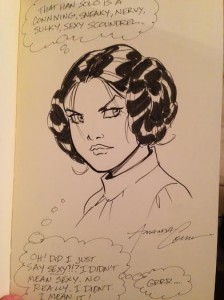
-Mara Wood Collection
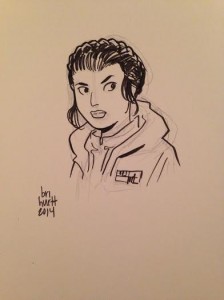
-Mara Wood’s Collection
Since these people are professionals, they will often have times set aside when they can be commissioned or do a few sketches. You as a patron should get organized. Before a convention, if an artist you are interested in is attending, get in touch with them. Email them, follow them on twitter, find a way to reach out and let them know that you are interested. Remember- it never hurts to ask. If they say ‘no’ or ‘maybe later,’ that means exactly that. If their rates are high, don’t haggle. If they have a Heroes Initiative cup or CBLDF cup or some other donation box at their table and they gave you a free head sketch, put a few bucks in there for them. No one likes a pest, and you probably don’t want an annoyed artist working on a piece for you anyway.
I learned early on that it is more fun to collect commissions that have a specific theme. That’s why I collect Fantastic Four characters. It’s my favorite series, and comic creators usually have a soft spot for the book. There is such a large cast of supporting characters and villains that it’s likely I will run out of wall space before I run out of subjects to commission from artists. That being said, not every artist is going to be familiar with whatever D-list character that showed up briefly in John Byrne’s tenure that I want commissioned. So if I were to ask for that kid that set himself on fire imitating Johnny Storm (his name is Tommy Hanson and no I don’t have that commission yet) I would bring in Fantastic Four 285 so that the artist doesn’t look at me like I’m crazy (well maybe they will for different reasons).
Another great strategy is to let the artist pick. I once emailed Steve Lieber of Superior Foes of Spider-Man and Whiteout to ask him if he would be willing to do a Fan Four piece for me, which he responded excitedly to. Picking up that he was interested in the series, I asked if there was a specific villain he wanted to do, to which he exclaimed, “KIRBY-ERA SANDMAN!” Knowing exactly the green- armor that he was referring to, my excitement quickly matched his. It is now one of my favorite pieces in my collection mostly due to the fact that it’s easy to tell Steve had so much fun with it.
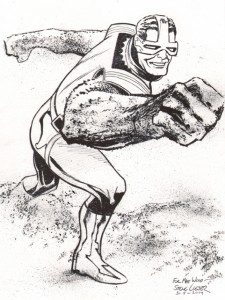
-Matt Wood Collection
Artists that love doing commissions relish knowing that you will cherish their work. Very rarely do artist, especially those that are established, need to do the work they do at conventions. Appreciation is the thing, when added to the extra dough collected that makes it all worth it. So, it bums me out to see when a collector has commissioned an artist for a piece and then quickly turns around and sells it on eBay. Not surprisingly, it also seems to upset the artist. Keep in mind that if you are making a profit off of a piece without the artists consent, you are taking advantage of that creator and making it harder for the more dedicated collector. I suggest always asking for the artist to personalize the piece for you which some creators will politely insist doing anyway. A personalized piece is less likely to be resold because unless the person buying it has your same name, it will look strange in the possession of a fellow art collector. On top of that, they don’t call it personalizing for nothing. It makes your already unique collection more special.
Remember, with a great collection comes great responsibility (I know, I groaned as I was typing it). Once you have taken your original art home, it’s yours to do as you wish. I suggest framing it, but can understand that’s just not an option for those who live with limited wall space. Proper storage and archiving should be implemented. Fellow art collectors will agree that there is no better archiving system better than Comic Art Fans. Sure it’s the only site of its kind, but they let you organize a scan of your piece however you like, as well as let you store private information that you may not want viewed by other browsing art fans, like the price you paid for the piece. The site is also a ton of fun to browse and maybe pick up a few ideas for future requests.
Brian was right. Once you start, it is hard to stop. The collecting game isn’t for everyone. It can be pricey, it takes time to build up a collection, and if you display your collection like I do, can result in a spacing issue. With all of those warnings under consideration, I can tell those that are still interested that there is not better feeling that having something made uniquely for you displayed like a trophy. It goes beyond just a cool piece of art of your favorite character; it’s a physical representation of the interaction of creator and fan, a token of a story that you will be sharing with other comic fans and collectors for as long as people are up for listening to you.
Further Exploring:
Also if you have any pieces or stories you’d like to share, please do!



